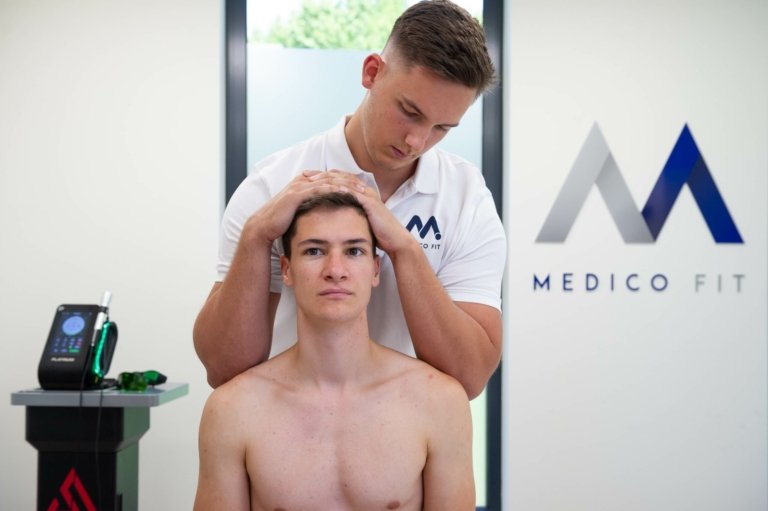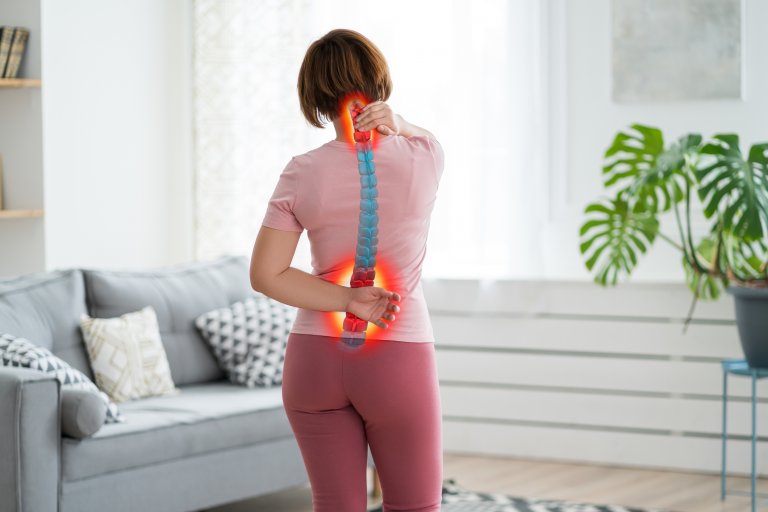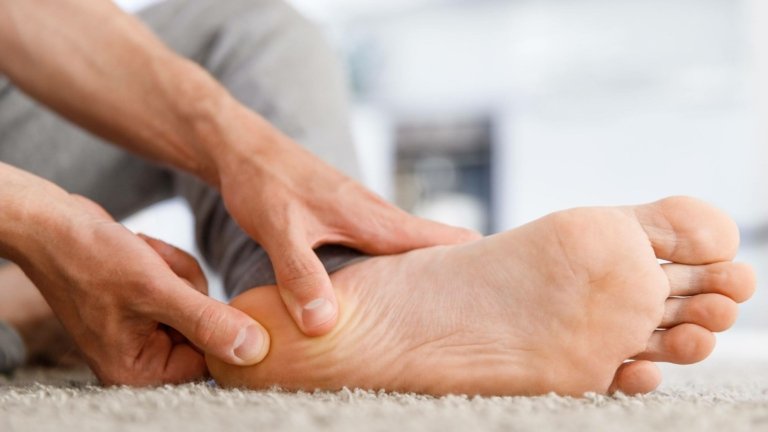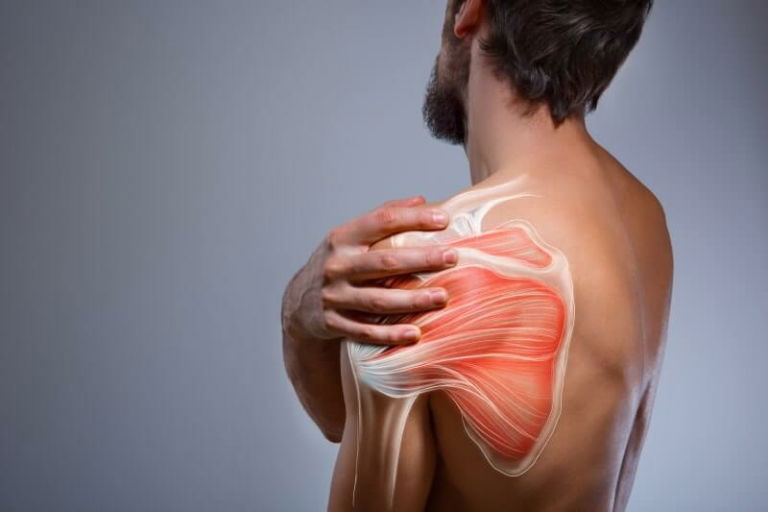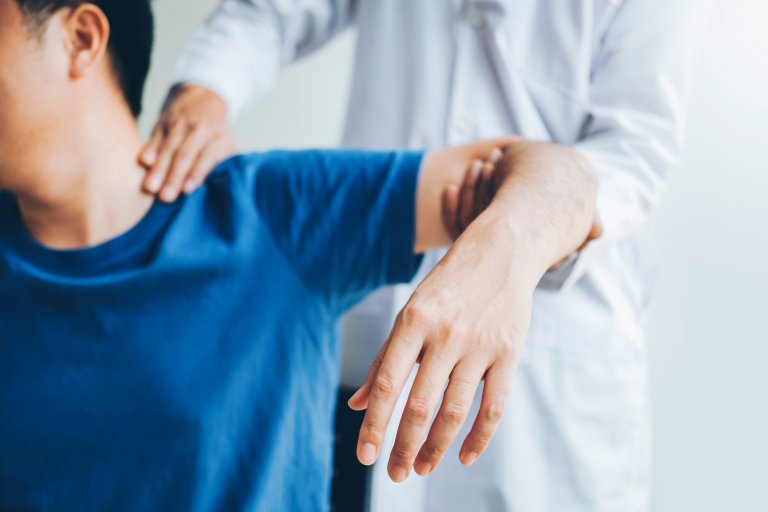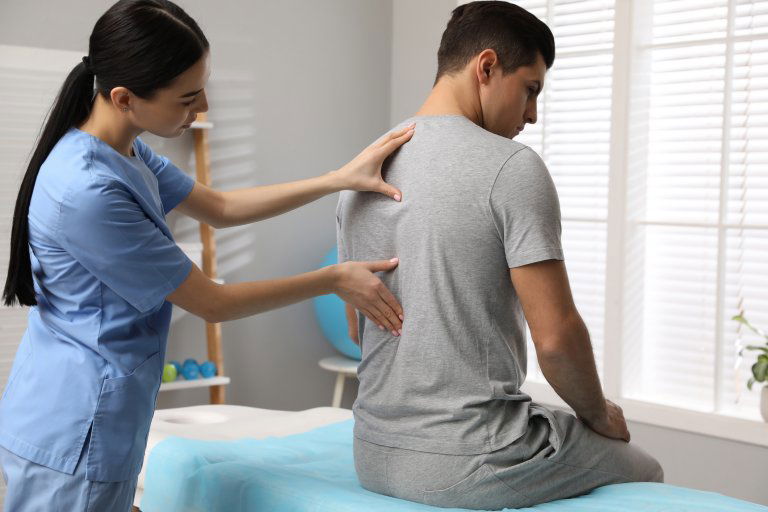Have you ever felt a sudden, sharp pain in your neck that left your cervical spine completely paralysed? This unpleasant experience, known as torticollis, can affect anyone at any time. Torticollis is not just an inconvenience, but can have serious consequences if not treated properly.
Waking up with a torticollis or wry neck is annoying, but not necessarily dangerous. Torticollis is most often caused by neck muscles or a medical condition such as osteoarthritis, which affects the facet joints of the spine.
Torticollis manifests as a sudden pain that is usually caused by sudden movements, injuries, or prolonged poor posture. According to some studies, as many as 70% of adults suffer from torticollis at least once in their lives!
Untreated torticollis can lead to long-term pain, reduced mobility, and serious complications such as chronic pain and permanent nerve damage. Without proper rehabilitation, the condition can worsen, affecting your quality of life, productivity, and overall health.
Fortunately, there is a solution that can help you prevent these complications and restore the health of your neck – MEDICOFIT specialist physiotherapy. With individually tailored programmes carried out by professionally trained therapists, MEDICOFIT offers you effective pain relief and long-term results.
Book an appointment for torticollis rehabilitation
Anatomy of the cervical spine
The spine is crucially important in our basic movement and walking, as it gives us structure and support. At the same time, it provides protection for the spinal cord, which is part of the central nervous system that enables functional movement and normal function of internal organs.
The cervical region is the most flexible part of the entire spine. The cervical spine starts just below the skull and contains seven cervical vertebrae that form the lordotic curve. The particular feature of the cervical vertebrae lies in their anatomical structure, which, in addition to the main opening for the spinal cord, contains openings for the arteries that carry blood from the heart to the brain.
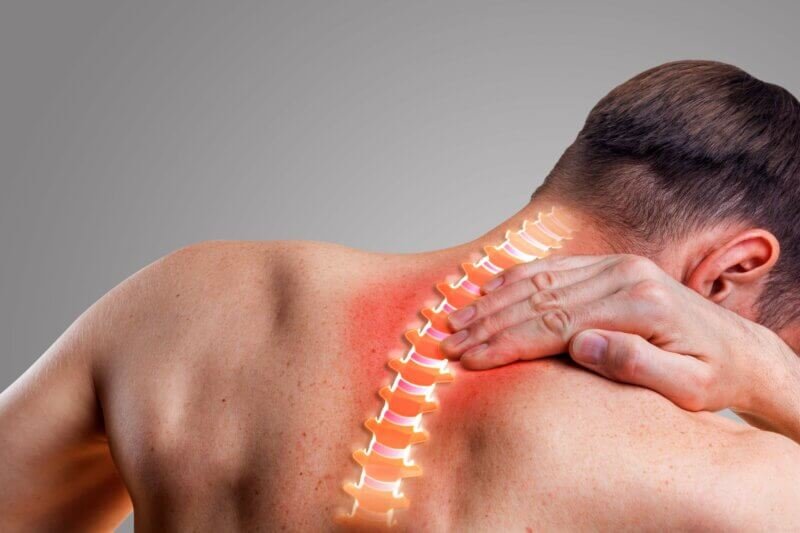
An additional particular feature of the cervical spine lies the first and second cervical vertebrae, which are called the atlas (first vertebra) and axis (second vertebra). Their anatomical structure allows for a greater range of motion of the neck, especially rotational movement.
The mobility of the cervical spine poses a greater risk of movement injuries due to the physical shape of the vertebrae, which are smaller and additionally loaded with the weight of the head and reduced muscle support.
What are the symptoms of torticollis?
Severe torticollis in the neck is manifested as limited movement (especially limited movement is turning the head in one direction or the other), stiffness, and pain. Limited movement in the neck results in the need to turn with the entire body, which affects everyday activities, such as driving.
The level of pain that an individual experiences is subjective and therefore varies in intensity. Individuals describe the pain of torticollis as sharp or dull.
Muscle tightness puts pressure on the nerve that emerges from the spinal cord in the cervical spine, causing tingling, numbness, and burning pain that radiates into the arm.
Associated symptoms of torticollis include headache and shoulder pain.
WHEN TO OPT FOR MEDICOFIT DIAGNOSTIC THERAPY?
- When torticollis persists for several days, a visit to diagnostic therapy is necessary.
- Neck pain is accompanied by symptoms such as limited mobility, tingling in the hands, or muscle weakness.
- If you have previously experienced such problems and the symptoms are recurring, this means that the condition was not properly treated.
At MEDICOFIT clinic, we provide patients with scientifically supported specialist physiotherapy, which begins with booking a diagnostic therapy appointment.
Book an appointment for torticollis rehabilitation
How long does torticollis last?
Torticollis symptoms disappear within one day to one week. The treatment time primarily depends on your treatment approach. The correct approach to treating torticollis symptoms affects the level of pain and reduces the chance of the condition recurring.
What does it mean if torticollis symptoms last longer than a week? We recommend further diagnostics.
What are the causes of torticollis?
Torticollis in the neck is the result of one or a combination of various factors that influence the development of symptoms, which we present in detail below.
SLEEP is the most common cause of torticollis. An incorrect sleeping position, mattress, and an unsuitable pillow are the main reasons why a person wakes up with a wry neck.
SUDDEN INJURY that occurs during sports or everyday activities, such as a fall and a side blow to the neck.
LONG-TERM REPETITIVE POSITIONS during various activities that put strain on the neck muscles, such as working on a computer or swimming.
POOR POSTURE negatively affects the entire spine. During prolonged phone use, your cervical spine is in a position where you are looking down towards the ground. This position places strain on the anatomical structures in the cervical spine, which over time develop various disease pathologies.

STRESS (physical, psychological, financial, etc.) that you experience in your everyday life can cause tightness in the neck. You have probably heard the saying “you carry the whole world on your shoulders”, which represents the stress-related tightness that physically manifests in your body.
EVERYDAY POSITIONS that you perform automatically are the most harmful to you, as you are not even aware of them (e.g. talking on the phone – holding the phone between your ear and shoulder).
JOINT PROBLEMS, such as osteoarthritis, are a cause of neck stiffness.
INFLAMMATION OF THE CENTRAL NERVOUS SYSTEM is a serious pathological condition that presents as neck tightness. If inflammation of the spinal cord or brain is suspected, you need to see a doctor urgently.
How you can help yourself
Torticollis symptoms are most often treated with home care, and below we present some effective ways to relieve neck pain and improve range of motion.
The primary recommendation is REST, lasting a day or two. During rest, we allow the tissue the ability to heal properly. Rest reduces pain, muscle tightness in the neck, and stiffness. Prolonged rest and subsequent muscle inactivity lead to loss of muscle mass and muscle weakness, which worsens the symptoms of torticollis and creates additional problems.
Until the situation improves, avoid ACTIVITIES THAT MAKE YOUR PAIN WORSE, such as excessive computer or phone use, swimming, etc.
For the first two to three days, it is recommended to use COLD (cryotherapy) to reduce inflammation and muscle pain. Later, it is recommended to use HEAT (thermotherapy), as it increases blood flow and reduces muscle stiffness in the neck.
LOW-INTENSITY STRETCHING of the neck muscles is recommended; for this purpose, we recommend learning proper stretching techniques with the help of a physiotherapist.
Book an appointment for torticollis rehabilitation
WHY CHOOSE SPECIALIST PHYSIOTHERAPY TREATMENT?
- We ensure high treatment success and long-term results.
- Up to 90% lower risk of cervical spine surgery in the future!
- We offer state-of-the-art non-invasive treatment methods that provide optimal conditions for complete recovery.
Comprehensive treatment at MEDICOFIT clinic is recommended by numerous renowned orthopaedic surgery specialists.
Exercises for torticollis
You can read about basic examples of EXERCISES TO INCREASE NECK MOBILITY and start doing them right away.
EXERCISE 1 – BENDING HEAD FORWARDS (FLEXION): Slowly bring your jaw closer to your chest and look towards the ground.
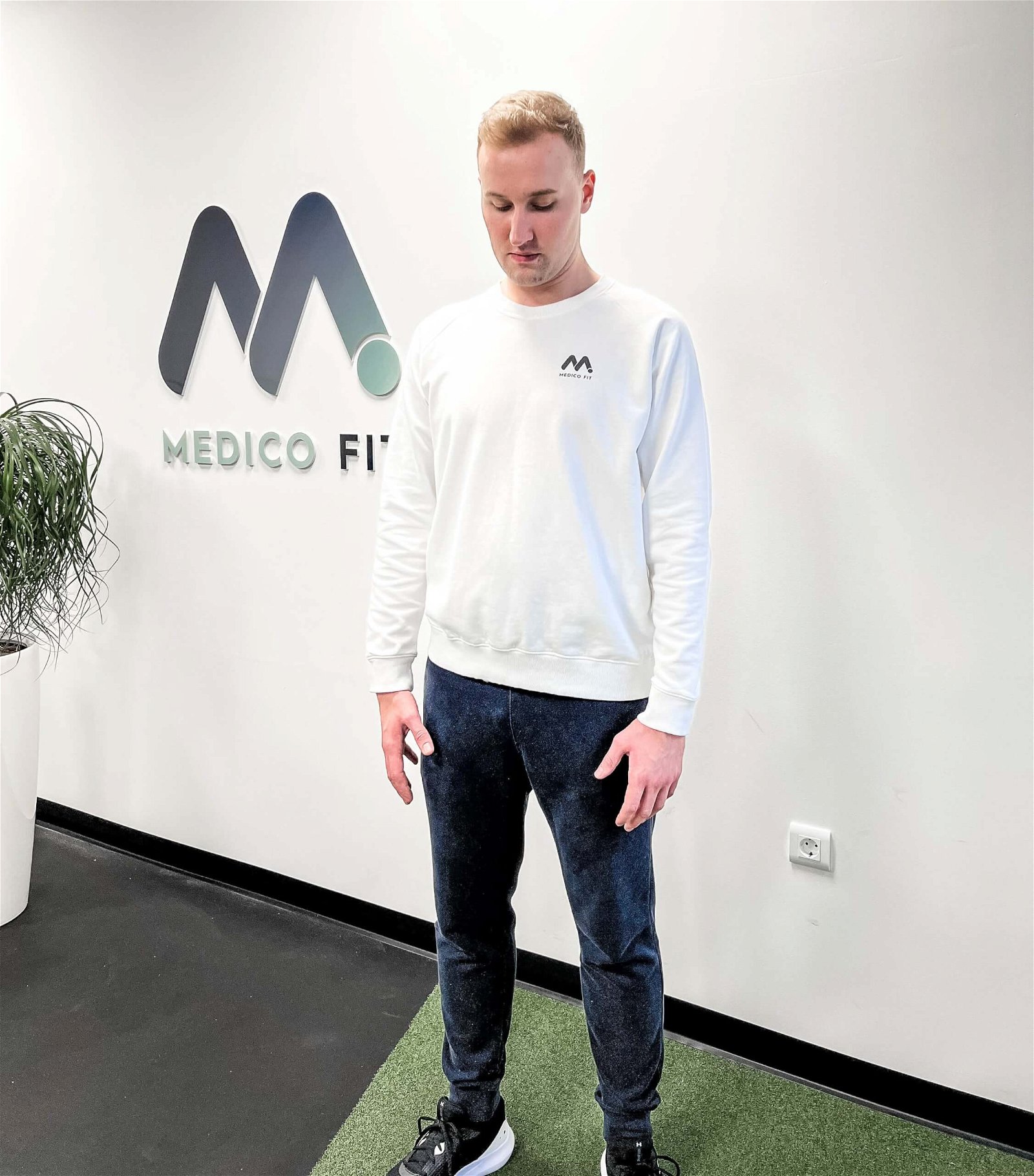
EXERCISE 2 – BENDING HEAD BACKWARDS (EXTENSION): Slowly bring the back of your head closer to the back of your chest and look up at the ceiling.
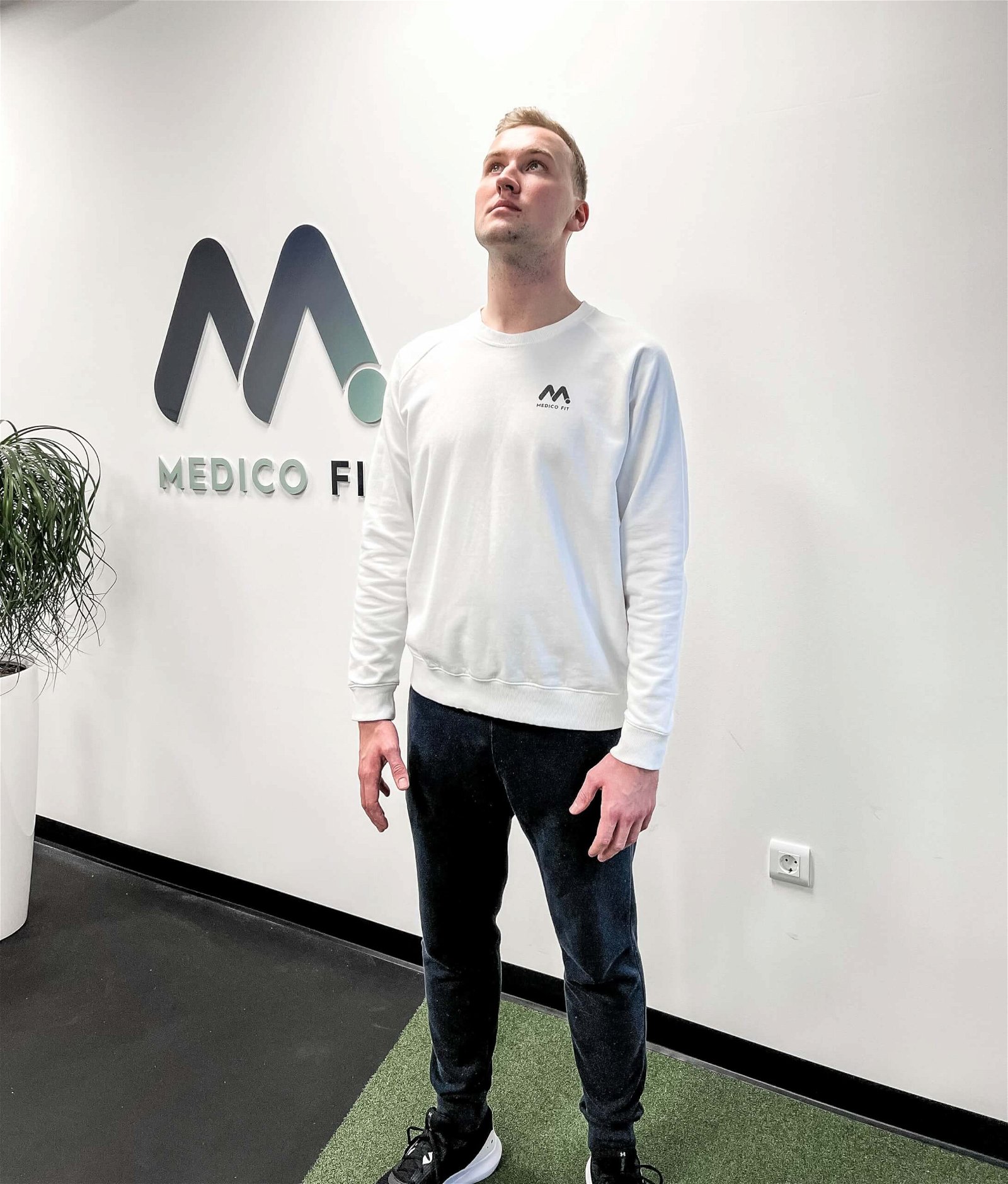
EXERCISE 3 – BENDING HEAD SIDEWAYS (LATERAL FLEXION): Slowly bring your left ear closer to your left shoulder (repeat the same on the other side).
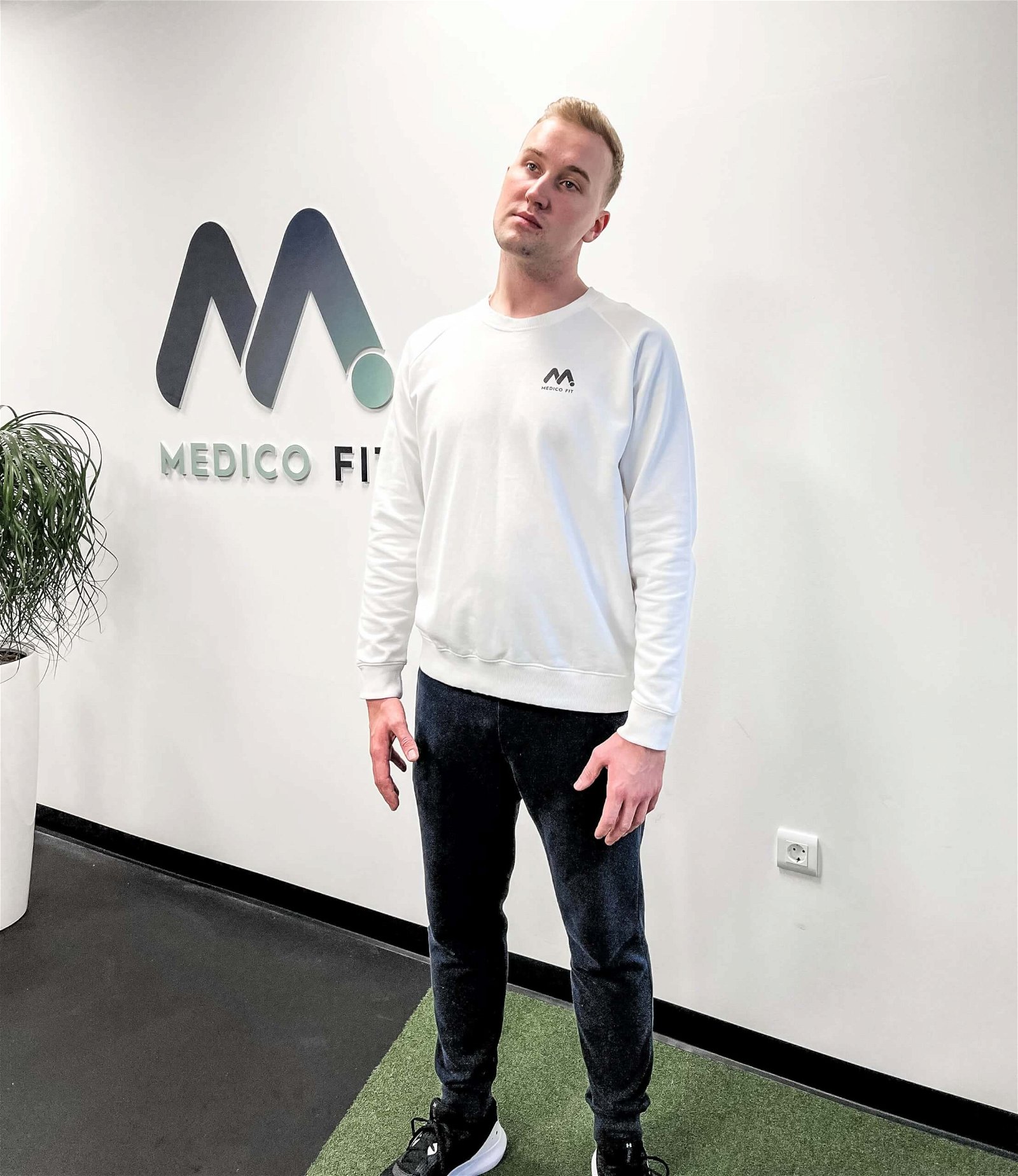
EXERCISE 4 – ONE-WAY ROTATION: Slowly bring your chin towards your shoulder and look in one direction over your shoulder (repeat the same in the other direction).
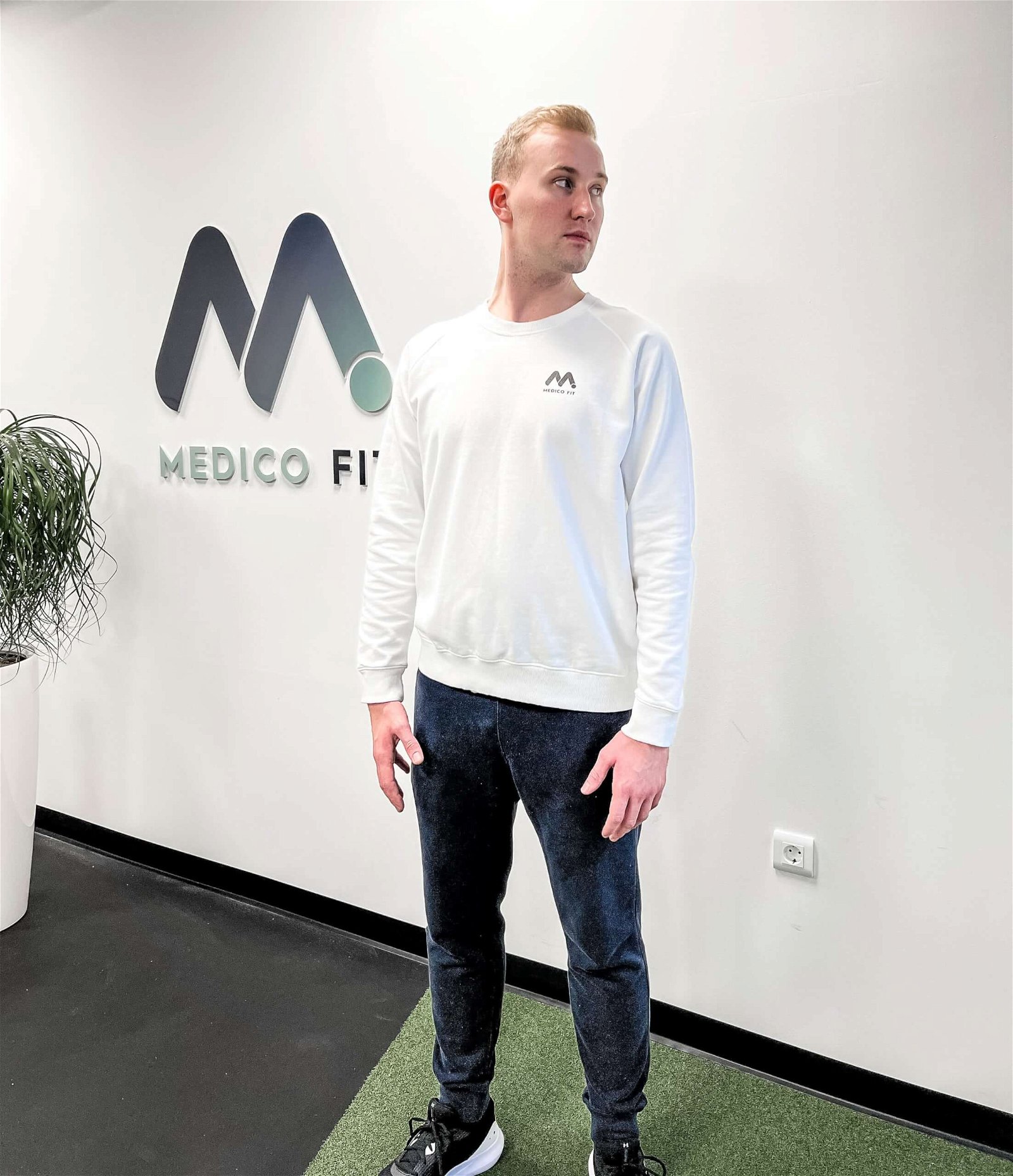
How do we reduce the chances of torticollis?
Every individual who has ever experienced torticollis would like to know the secrets to reducing the chance of it occurring.
At MEDICOFIT clinic, we are aware of how important quality prevention is to avoid potential injuries and therefore reveal our secrets to reducing the risk of torticollis.
In our work, we focus on establishing the appropriate load-bearing capacity of the cervical spine and the biomechanics of body posture.
Below is an explanation of what this actually means, what modern concepts of treatment and prevention look like, and what effects this has on the body.
Physiotherapy treatment for torticollis
The initial phase of physiotherapy treatment includes diagnostic therapy, through which we gain insight into the physical condition of your body, the causes of the problems, the consequences of the disease, and the limitations it brings with it.
The physiotherapist diagnostician sets up an individualised physiotherapy programme that focuses on eliminating or controlling the presenting symptoms, and maintaining general physical motor function. We focus on reducing pain, stiffness in the neck, improving range of motion, strengthening muscles, and developing dynamic neck stability.
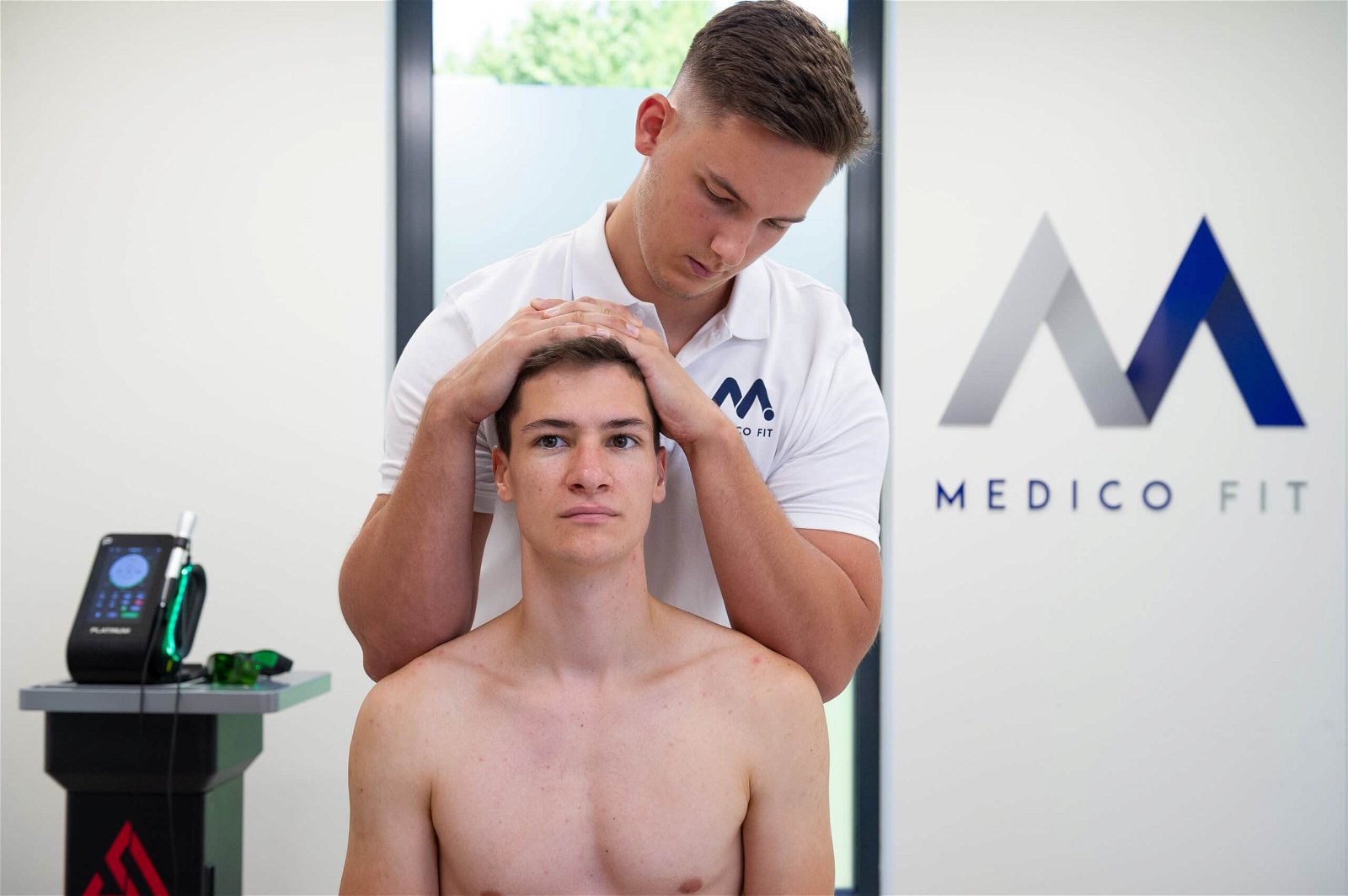
Kinesiology training is a key part of physiotherapy treatment, as stretching and active exercises help increase the strength and flexibility of the neck muscles. Strengthened neck muscles more effectively withstand daily load and tensile forces.
Modern physiotherapy treatment contains a key element to which we pay special attention – establishing the correct load-bearing capacity of the spine. It is important that your cervical spine is able to perform appropriate movements with a full range of motion.
First, we perform isometric and later active exercises for the neck and spinal muscles, which are crucial for proper biomechanics of body posture.
Physiotherapy treatment includes the use of kinesio taping and massage, in addition to state-of-the-art support technology, such as ultrasound therapy, laser therapy, and TECAR therapy.
A physiotherapist will advise you on the correct setup of your work environment, appropriate ergonomic posture, correct way to get out of bed, the correct way to pick up heavy objects, etc.
Their task is to raise awareness and promote your own awareness of performing everyday activities in accordance with correct spinal positions and body posture.
DANGERS AND PITFALLS OF DELAYED REHABILITATION

MEDICOFIT specialists
- Lack of rehabilitation can lead to accelerated development of degenerative changes in the cervical spine, including osteoarthritis and herniated disc.
- Long-term inadequate treatment can cause permanent muscle rigidity and the formation of trigger points, which increases pain.
- Long-term incorrect posture due to pain and limited movement can lead to biomechanical dysfunctions and secondary problems.
Inadequate or delayed rehabilitation seriously jeopardises an individual’s long-term physical health and is the main culprit for unsuccessful results and permanent movement limitations.
As mentioned above, it is recommended to see a doctor when symptoms last longer than a week and are unbearable.
A visit to the doctor for torticollis is necessary when it is accompanied by fever, severe headache, vomiting, dizziness, loss of coordination and balance, as it may indicate a serious condition such as meningitis!
Book an appointment for torticollis rehabilitation
- Kelc R., 2012. Funkcionalna anatomija hrbtenice. VIII. Mariborsko ortopedsko srečanje. Interdisciplinarno strokovno srečanje. Hrbtenica v ortopediji. Zbornik predavanj. Maribor, pp. 13-23
- Cohen S. P. (2015). Epidemiology, diagnosis, and treatment of neck pain. Mayo Clinic proceedings, 90(2), 284–299. https://doi.org/10.1016/j.mayocp.2014.09.008
- David D, Giannini C, Chiarelli F, Mohn A. Text Neck Syndrome in Children and Adolescents. International Journal of Environmental Research and Public Health. 2021; 18(4):1565. https://doi.org/10.3390/ijerph18041565
- Perolat, R., Kastler, A., Nicot, B. et al. Facet joint syndrome: from diagnosis to interventional management. Insights Imaging 9, 773–789 (2018). https://doi.org/10.1007/s13244-018-0638-x
- Kazeminasab S, Nejadghaderi SA, Amiri P, Pourfathi H, Araj-Khodaei M, Sullman MJM, Kolahi AA, Safiri S. Neck pain: global epidemiology, trends and risk factors. BMC Musculoskelet Disord. 2022 Jan 3;23(1):26. doi: 10.1186/s12891-021-04957-4. PMID: 34980079; PMCID: PMC8725362.









